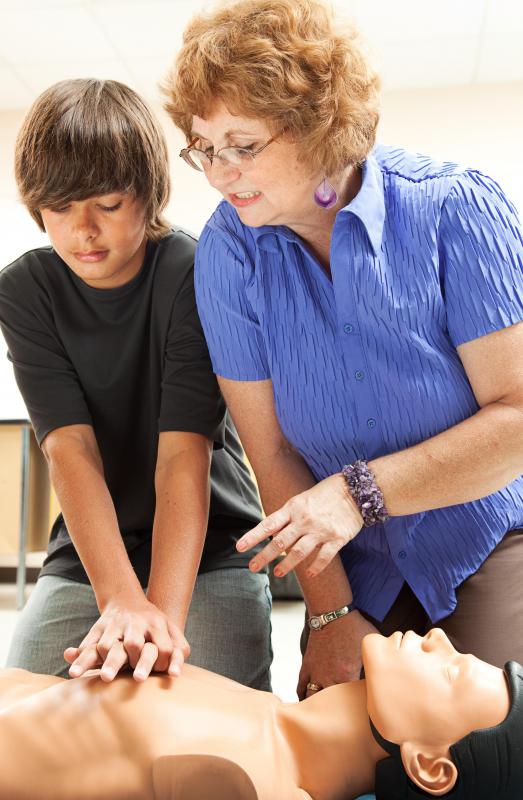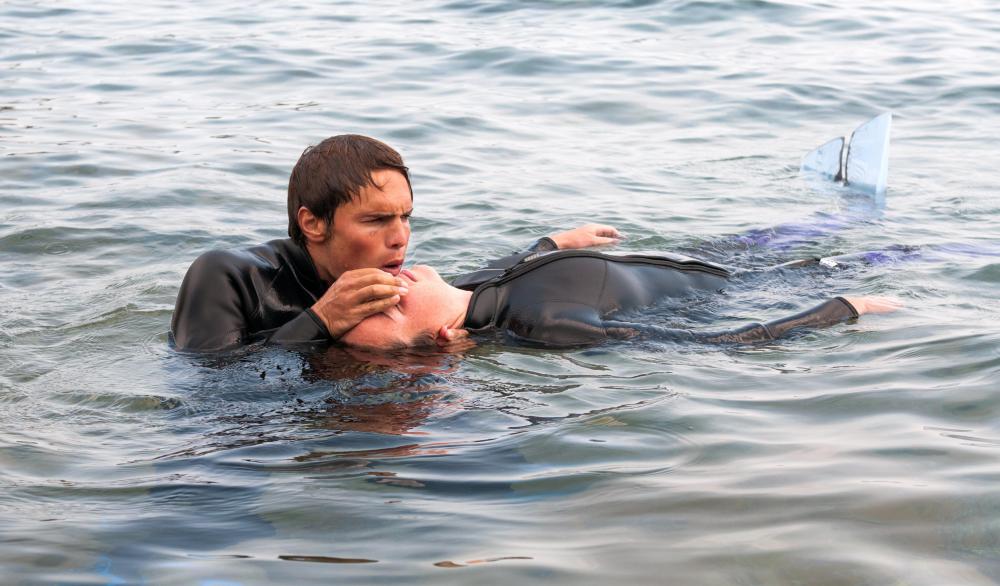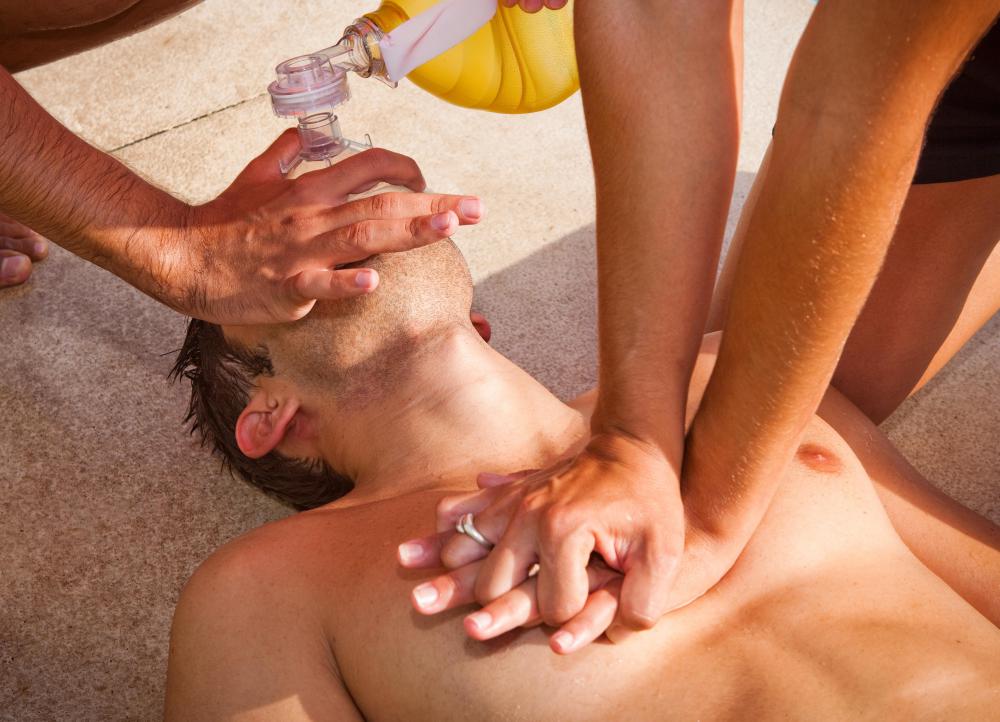At WiseGEEK, we're committed to delivering accurate, trustworthy information. Our expert-authored content is rigorously fact-checked and sourced from credible authorities. Discover how we uphold the highest standards in providing you with reliable knowledge.
How do I Learn CPR?
There are many ways to learn CPR, or cardiopulmonary resuscitation. There are books, videos, websites, and even interactive demonstrations from which a person can learn this life-saving technique. However, many people believe the best way to learn CPR is in a classroom setting in which students can see a demonstration and get hands-on instruction from a teacher.
Whether a person decides to learn CPR online, in a class, or from a video, she learns a life-saving technique. When someone performs this technique, she does rescue breathing into a person’s mouth and compresses his chest. The purpose of this technique is to keep air circulating through a victim’s body when he cannot breath for himself and to keep oxygen-rich blood flowing in a person’s body when his heart has stopped beating on its own.

When a someone learns CPR, she will discover how to do rescue breathing by putting her mouth over the open mouth of the victim and blowing air into the victim’s lungs. Usually, after giving two breaths in this manner, the rescuer will place one hand over the other and press the victim’s chest repeatedly. Thirty chest compressions are done, and then the rescuer follows up by providing two additional breaths of air. This cycle of breaths is continued until emergency medical help arrives, such as an ambulance or a physician. It is critical to keep the cycle of breathing and compressions going, as the brain cannot survive an extended period without oxygen.

Another thing a person should learn in a class, book, or video about CPR is when to use it and when to stop. This technique should be done whenever a person has stopped breathing and his heart has stopped. This may be necessary if a person has had a heart attack or stroke, had an object block his airway, come close to drowning, or suffered a back or neck injury. It may also become necessary if a person suffers from a serious electrical shock or has a severe allergic reaction.

In-person CPR classes often end in certification for the person who has just learned the technique. It is often suggested that the person follow up with a refresher course every couple of years. While books and websites may be good for learning CPR, the problem with this type of instruction is there’s no one to let the learner know whether she is doing something incorrectly. Also, there is usually no certification with this type of learning. However, deciding to learn CPR from a book or online may be better than getting no instruction at all.
AS FEATURED ON:
AS FEATURED ON:













Discussion Comments
@irontoenail - I actually wish it was mandatory for people to take a CPR lesson, even just a short online CPR course, just to clear up some of the misconceptions that a lot of people have from TV.
It's possible that they could do more harm than good if they think they know what they're doing after an accident, but haven't had real training.
@pleonasm - One of my friends recently took a CPR course and he told me he was the only one in the class who was doing it of his own accord. Everyone else in the class was getting certified because of their job.
It's great that so many jobs require people to learn CPR, but I was a bit saddened that more people weren't just taking it for their own interest. You never know when it will come in handy and you might be called on to use CPR whether you're a firefighter or a secretary.
I would much rather just keep myself up to date with the latest techniques every few years than risk being in a situation where I could have helped, but didn't know what to do. Particularly if children were involved.
Just remember that CPR techniques are constantly being improved, so if you took a class a few years ago, you might be out of date. They don't just expect people to take courses every few years so that they remember. They like to make sure that everyone who needs to know, does know how the latest techniques work.
It's a particularly good time to take a CPR course now if you're not familiar with the defibrillator machines that are in many public places these days. You also need to know the difference between working on an adult and working on a child or an infant.
Post your comments